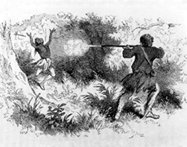Order of the Golden Fleece
Austria, Chivalric Orders, History, Order of the Golden Fleece, Spain

19th century medal of the Spanish Order of the Golden Fleece
The Order of the Golden Fleece was founded January 10, 1430 in Bruges, by Philip the Good, Duke of Burgundy and is the oldest of the great chivalric orders of the Middle Ages.
The Order of the Golden Fleece was founded, according to Philip’s proclamation:
[F]for the reverence of God and the maintenance of our Christian Faith, and to honor and exalt the noble order of knighthood, and also …to do honor to old knights; …so that those who are at present still capable and strong of body and do each day the deeds pertaining to chivalry shall have cause to continue from good to better; and .. so that those knights and gentlemen who shall see worn the order … should honor those who wear it, and be encouraged to employ themselves in noble deeds…”.
The name of the Order and its badge, a pendant sheep’s fleece made of gold, represented the fleece sought by Jason and the Argonauts – a heroic legend which must have reminded Philip of the Arthurian quest for the Holy Grail. The badge is suspended from a Collar in the form of a Fire-Steel (fusil), throwing off flames (the central fire-steel being elaborated later into an ornate, enameled jewel, from which the badge was hung).
The motto of the Order, Pretium Laborum Non Vile (“Not a bad reward for labor”) traditionally appeared on the front of gold versions of the collar and, on the reverse, the motto Non Aliud (a translation of Philip the Good’s motto “Autre n’auray” – “I will have no other”). Non-sovereign knights were traditionally forbidden by the Order’s statutes to accept membership in any other orders of knighthood.
Membership was originally limited to twenty-four knights, but was gradually increased to 51. When Burgundy was absorbed into the Empire, sovereignty over the order passed to the House of Hapsburg. The War of the Spanish Succession (1701-1714) divided the Order into separate branches under the patronage of both Spanish and Austrian Hapsburgs. Its members have typically been drawn from the ranks of sovereign European princes and the most prominent military heroes. Ironically, both Napoleon Bonaparte and his adversary, the Duke of Wellington, were members of the Spanish Order.
The connection of the Austrian Order to the state was lost in 1918, but the Austrian Order is still regarded as “an independent legal entity in international law”, and its current sovereign is Archduke Karl Habsburg-Lothringen
The sovereign of the Spanish Order is King Juan Carlos of Spain.






